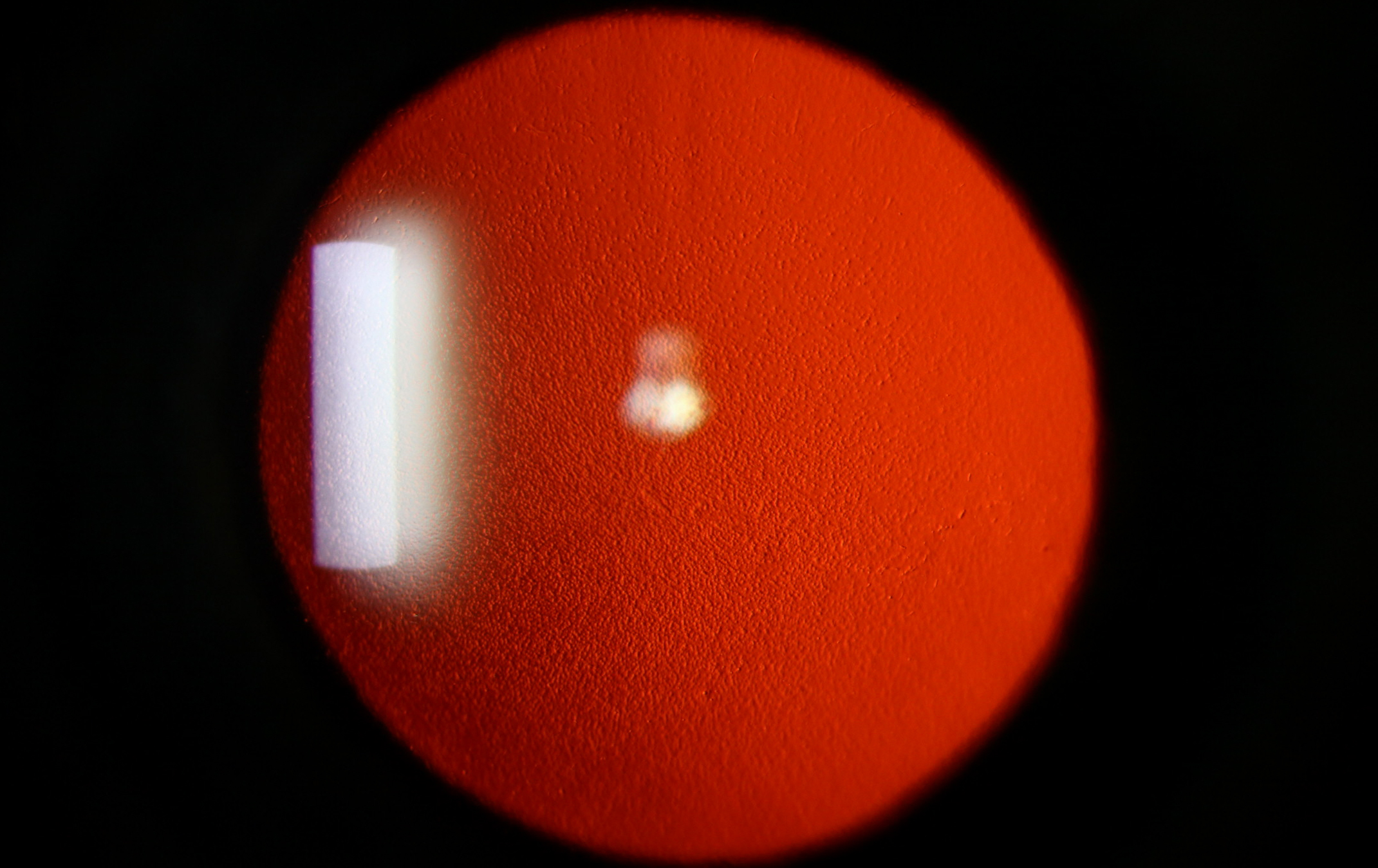 |
Based on the results of this study, researchers say that endothelial keratoplasty may be a useful intervention even in early-stage Fuchs’ before the presence of clinical edema. Photo: Christine Sindt, OD. Click image to enlarge. |
Corneal guttae have been cited as a key cause of reduced vision quality in eyes with Fuchs’ endothelial corneal dystrophy (FECD), but with advanced imaging techniques such as Scheimpflug and optical coherence tomography, researchers have begun to wonder whether and to what extent subclinical corneal edema may contribute to this decreased visual quality. To investigate, researchers conducted an observational study of FECD patients. Their findings, published recently in Cornea showed that subclinical edema is a key contributor.
In the cross-sectional study, researchers divided 46 pseudophakic eyes of 31 patients with FECD into two groups—those with and without subclinical corneal edema. At presentation, eyes had a Krachmer grade of 5 and no clinical corneal edema. Eyes were classed as hasing subclinical corneal edema if they had more than one of the following criteria: loss of regular isopachs, displacement of the thinnest point and focal posterior surface depression in Scheimpflug tomography.
The researchers found that eyes with subclinical corneal edema had significantly worse corrected distance visual acuity and contrast sensitivity (measured using the Pelli-Robson chart) compared with eyes without subclinical edema. Subclinical edema eyes had lower contrast sensitivity at all spatial frequencies and showed statistically significant reductions in total contrast sensitivity when tested with and without glare. Straylight didn’t differ significantly between the two groups.
“Subclinical edema itself may decrease contrast sensitivity,” the researchers suggested in their Cornea paper, adding that guttae likely didn’t influence this outcome since all eyes presented with a similar amount, measured using the Krachmer scale. “Previous studies that associated a reduction of contrast sensitivity in eyes without clinical edema with corneal guttae often did not assess the presence of subclinical corneal edema,” they wrote. “Therefore, the reduction of contrast sensitivity in these studies may have been the result of subclinical edema and not specifically of corneal guttae.”
They concluded that surgical intervention may be warranted in early-stage FECD patients with subclinical corneal edema and subsequent contrast sensitivity and visual acuity decreases. “Nevertheless, other patient-related variables should also be considered such as patient-reported symptoms when deciding whether a surgical intervention is advantageous for a patient. Future studies should investigate the benefit of endothelial keratoplasty in eyes without clinical corneal edema but with subclinical corneal edema to promote a standardized and evidence-based treatment of patients with FECD."
Friedrich M, Hofman CA, Chychko L, et al. Influence of subclinical corneal edema on contrast sensitivity in Fuchs endothelial corneal dystrophy. Cornea 2023;00:1-8. |

